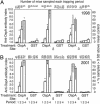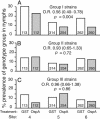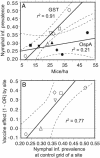An ecological approach to preventing human infection: vaccinating wild mouse reservoirs intervenes in the Lyme disease cycle
- PMID: 15608069
- PMCID: PMC536054
- DOI: 10.1073/pnas.0405763102
An ecological approach to preventing human infection: vaccinating wild mouse reservoirs intervenes in the Lyme disease cycle
Abstract
Many pathogens, such as the agents of West Nile encephalitis and plague, are maintained in nature by animal reservoirs and transmitted to humans by arthropod vectors. Efforts to reduce disease incidence usually rely on vector control or immunization of humans. Lyme disease, for which no human vaccine is currently available, is a commonly reported vector-borne disease in North America and Europe. In a recently developed, ecological approach to disease prevention, we intervened in the natural cycle of the Lyme disease agent (Borrelia burgdorferi) by immunizing wild white-footed mice (Peromyscus leucopus), a reservoir host species, with either a recombinant antigen of the pathogen, outer surface protein A, or a negative control antigen in a repeated field experiment with paired experimental and control grids stratified by site. Outer surface protein A vaccination significantly reduced the prevalence of B. burgdorferi in nymphal blacklegged ticks (Ixodes scapularis) collected at the sites the following year in both experiments. The magnitude of the vaccine's effect at a given site correlated with the tick infection prevalence found on the control grid, which in turn correlated with mouse density. These data, as well as differences in the population structures of B. burgdorferi in sympatric ticks and mice, indicated that nonmouse hosts contributed more to infecting ticks than previously expected. Thus, where nonmouse hosts play a large role in infection dynamics, vaccination should be directed at additional species.
Figures



References
Publication types
MeSH terms
Substances
Grants and funding
LinkOut - more resources
Full Text Sources
Other Literature Sources
Medical

